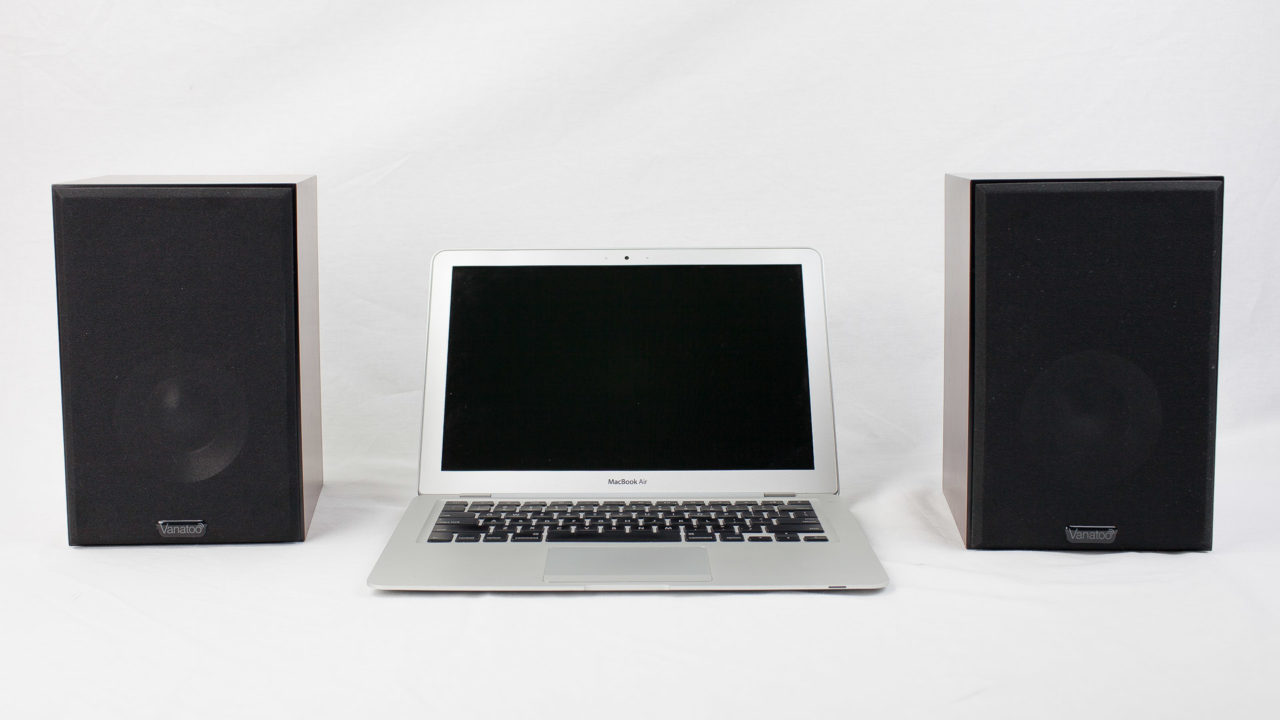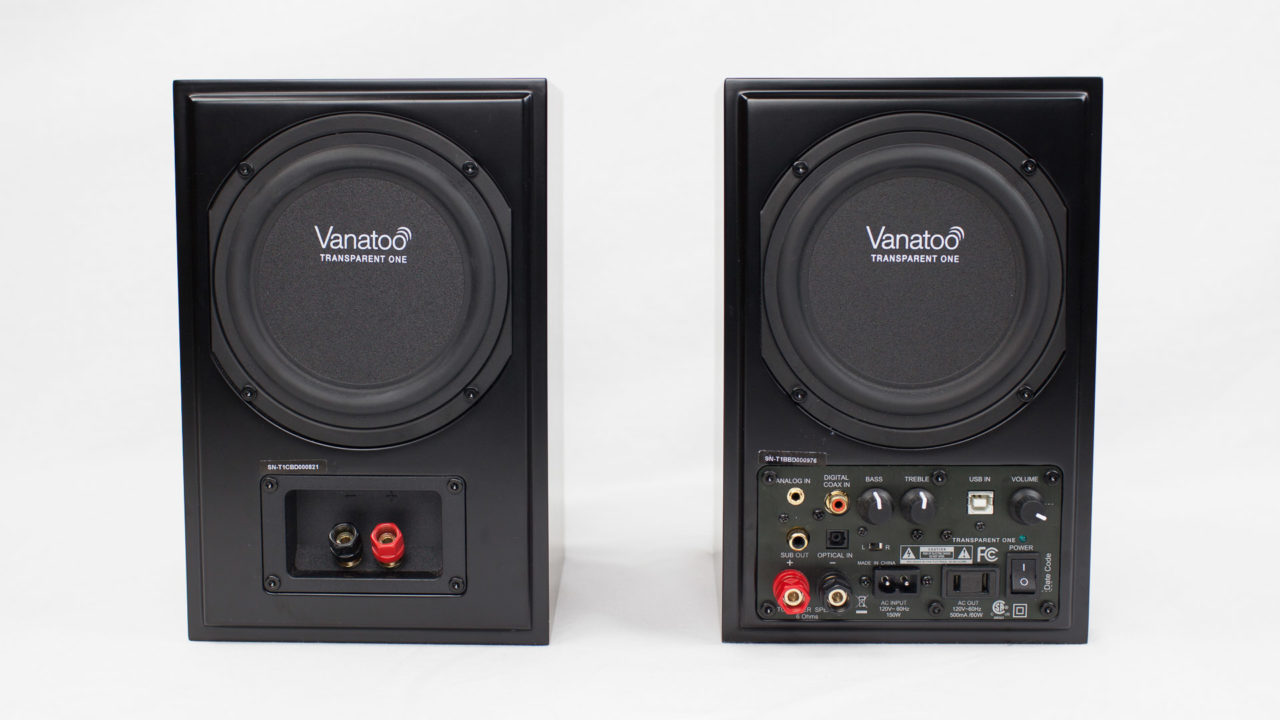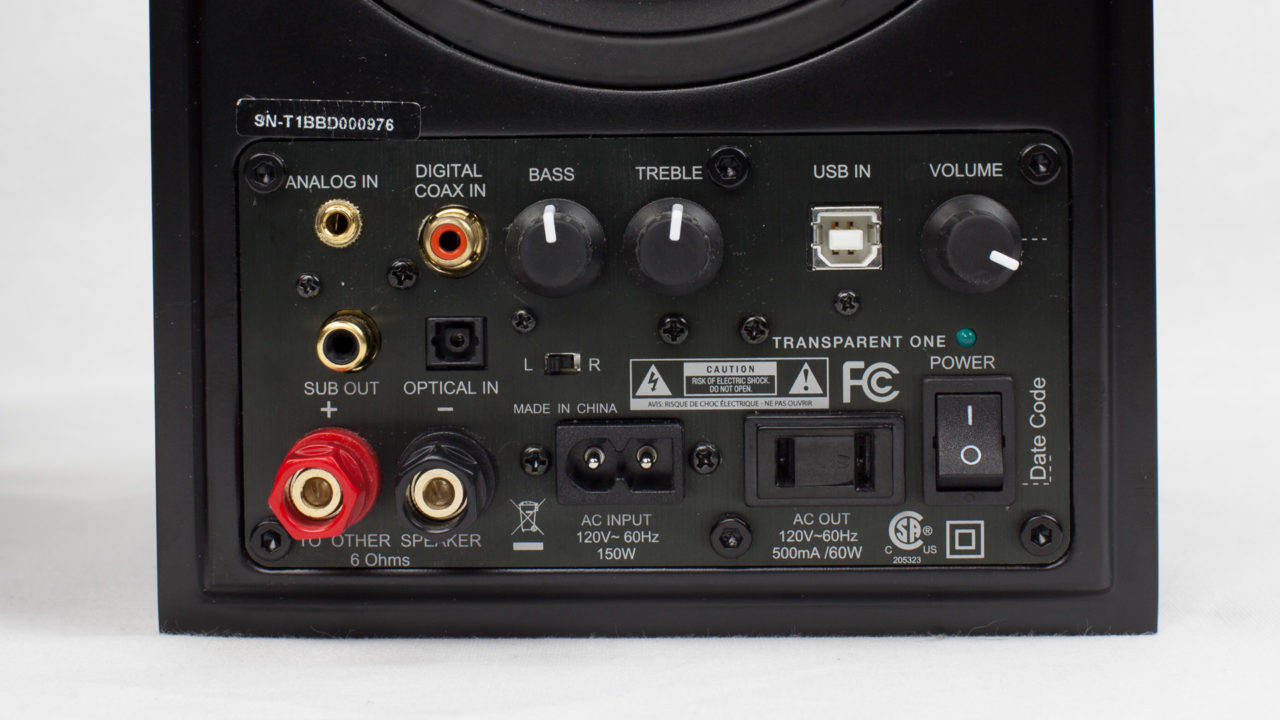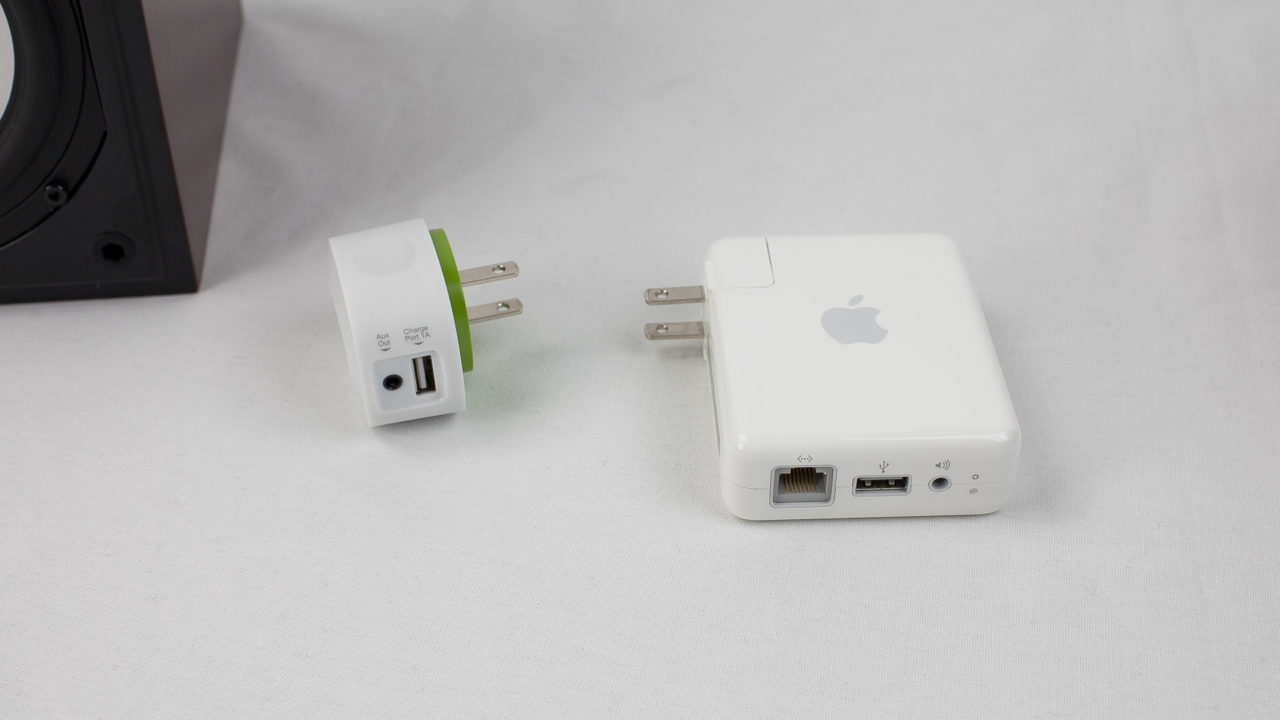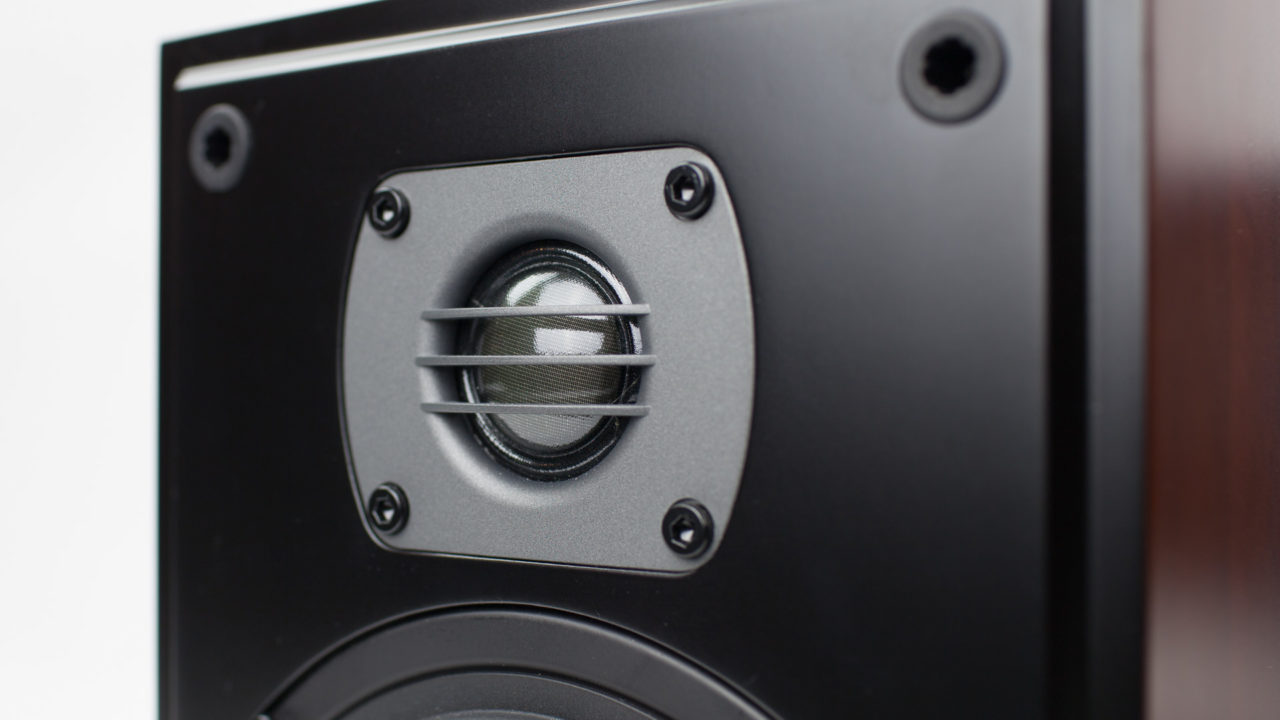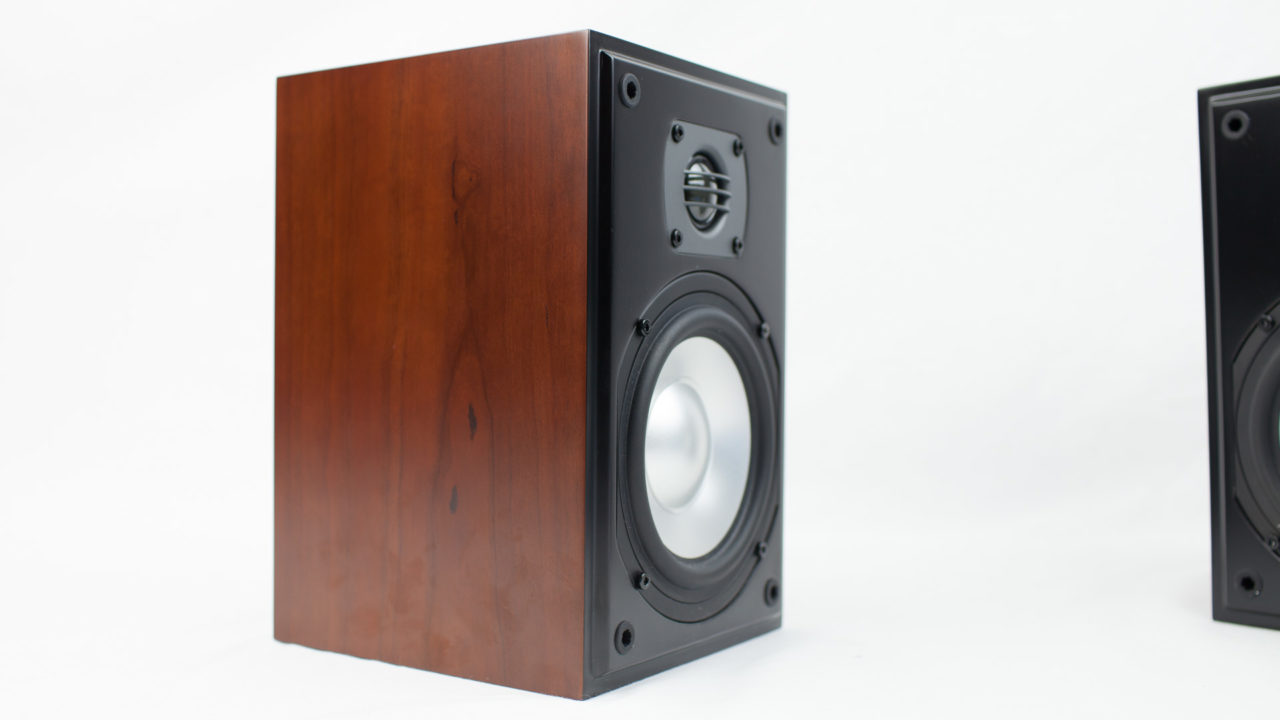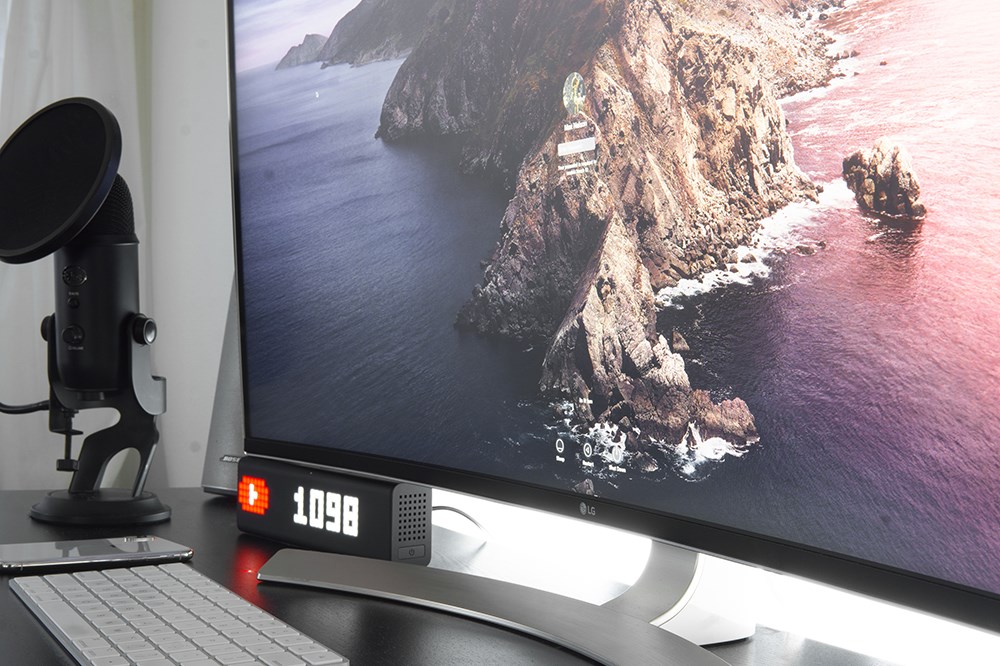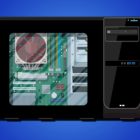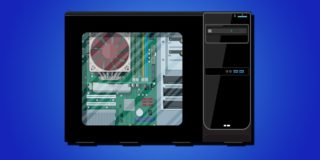The Vanatoo Transparent One Speakers Blend Powerful Bass and Crystal Clear Highs to Perfection
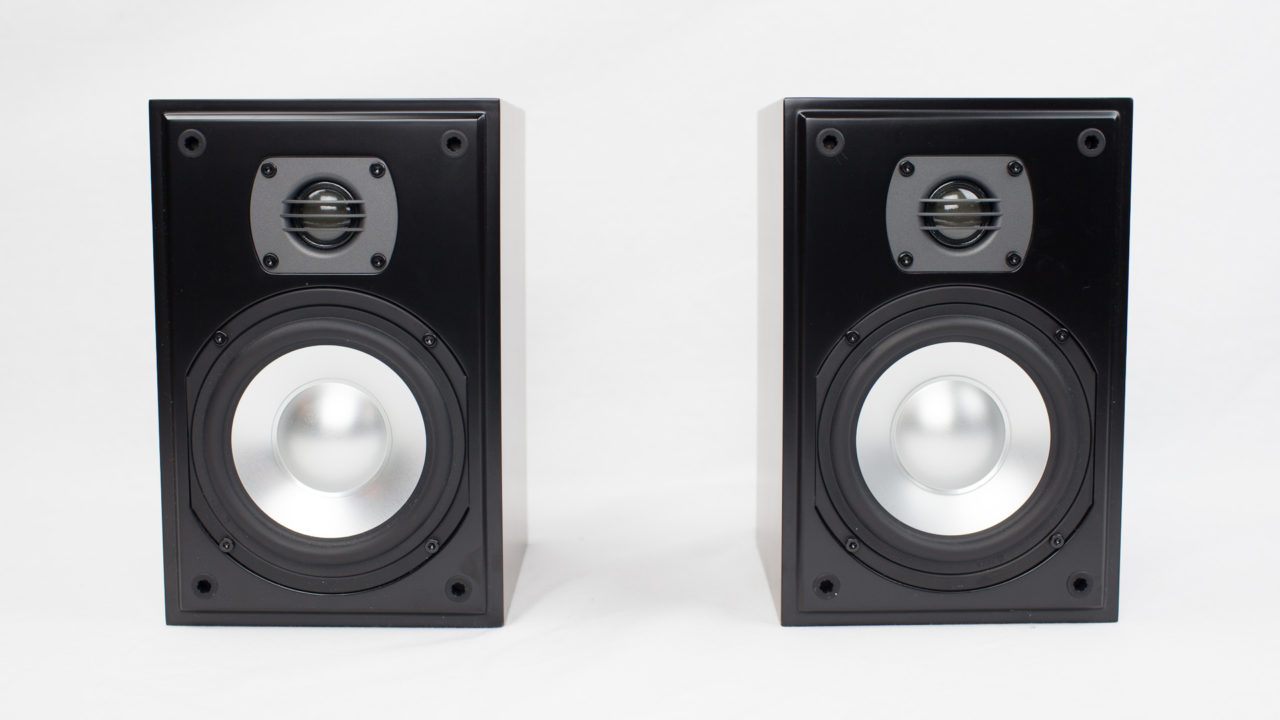
Wow. That was the first word that raced through my head in the moments after music started playing from the Vanatoo Transparent One speakers I had just set up on my desk. The track was “We Found Each Other in the Dark,” from City and Colour’s 2011 album Little Hell, and these compact bookshelf speakers sitting impressively on either side of my monitor were producing a soundstage that was notably more inviting than the one provided by my standard speakers, the Focal XS.
I first had an opportunity to listen to the Vanatoo Transparent One speakers in March during this year’s Macworld / iWorld conference in San Francisco, but only on the large and noisy show floor — hardly an ideal listening environment. From what I could hear that day, however, it was clear that these speakers, the first from Vanatoo co-founders Gary Gesellchen and Rick Kernen, deserved a closer look. Luckily, Vanatoo loaned me a pair for review and I’ve been enjoying them for the past few weeks.
Design and Features
The Vanatoo Transparent One speakers are compact for bookshelf speakers, but larger than average when it comes to desktop use. They arrive weighing a dense 12 pounds each, and measure 10 inches tall, 6.5 inches wide, and 8.5 inches deep (the passive speaker is an inch shallower as it lacks the inputs and control knobs of the active speaker).
The centerpieces of the Transparent One design are the 5.25-inch aluminum woofer, a matching 5.25-inch passive radiator on the rear, and a 1-inch silk dome tweeter up front. Together, they produce a combination of warmth and clarity that I have yet to encounter in another speaker of the same size in even remotely the same price range.
Around back, you’ll find an array of inputs and controls. Four inputs types are available, including USB, Toslink optical, coax digital, and a 1/8th-inch (3.5mm) analog input. But don’t expect a full-fledged multi-input switcher, or the ability to switch inputs at all. Despite the variety of inputs, only one can be active at a time, and you’ll need to physically disconnect the current input in order to get a new input to work.
Looking further at the rear panel of the active speaker, independent bass, treble, and volume nobs allow users to refine the speakers’ output, and a left/right switch aids in speaker location setup (and is especially handy considering that the active speaker is an inch deeper than the passive speaker, potentially limiting certain placement options).
As I’ll discuss later, the Transparent One speakers stand on their own beautifully without a subwoofer, but for those looking for a bit more bass, a subwoofer output is also available. When connected, the speakers automatically set a crossover at 125 Hz to provide the proper balance between the speakers and subwoofer.
A nice touch of the Transparent One speakers is the addition of an AC outlet on the rear control and input panel. Vanatoo sells the Transparent One speakers in both AirPlay and Bluetooth kits, but instead of featuring the wireless circuitry inside the speakers, like the Klipsch G–17 or iHome speakers, the kits include an Apple AirPort Express 802.11n (1st generation) or Avantree Bluetooth receiver. Either can plug directly in to the AC outlet on the rear of the Transparent Ones and pass audio via the 3.5mm input. From a design perspective, this setup isn’t as clean as an integrated wireless chip, but it helps keep things simpler inside the speakers and allows the user to easily upgrade to any future wireless music technologies as they become available.
The Transparent One speakers are powered by a 60-watt-per-channel class D amplifier housed in the active speaker that provides plenty of headroom. While I was able to get the speakers to distort slightly at painfully loud volumes, any reasonable listening level was accommodated just fine. In fact, I was specifically impressed with how well these speakers sounded at low volumes. The Transparent Ones maintained a rich and clear sound when other similar speakers, like my Audioengine A5+, lose their “magic” at lower listening levels.
Direct Digital
During my review period, I spent the majority of the time listening to the Transparent Ones via USB connected to my PC and Mac, but also experimented with optical and analog inputs. The analog inputs were specifically used for testing the wireless kit functionality with the Bluetooth and AirPort Express devices. Music passed wirelessly via Bluetooth and AirPlay unsurprisingly fell short of USB and optical, but was still more than acceptable for casual listening. If you’re going to use these speakers on your desk, however, I’d recommend sticking with a digital input like USB, and with good reason.
Despite being powered speakers with digital inputs, the Transparent Ones don’t have a digital-to-analog converter (DAC). The active speaker’s D2Audio Class D amplifier directly powers the speakers without the traditional analog conversion and operational amplifiers in between. On the plus side, this means that a digital signal input into the Transparent Ones stays digital all the way to the speaker, eliminating factors that may degrade sound quality. On the slightly down side, this means that while the speakers can accept a digital signal at up to 96kHz/24-bit, the integrated digital signal processor internally converts all incoming audio to 48kHz/24-bit. In my testing with lossless tracks ranging from 44kHz/16-bit to 192kHz/24-bit, however, this conversion doesn’t noticeably detract from the perceived sound output, and the music sounds simply amazing.
Listen to the Music
It’s always difficult to describe speaker quality in writing when the reader wasn’t there to share your experience, but I’ll try to hit a few highlights of my listening tests.
As I mentioned before, the Vanatoo Transparent Ones immediately sounded better than my regular speakers, the Focal XS. As a 2.1 system with a drastically different design, the comparisons won’t be scientific, or necessarily fair, but I can state without hesitation that, after two weeks, I greatly prefer the Transparent Ones to both the Focal XS and my standard bookshelf speakers, the Audioengine A5+.
The Transparent Ones provide a unique combination of warmth and clarity, with impressive bass for speakers this size. On The Kooks’ 2008 album Konk, I heard a vocal harmony in “See the Sun” that I’d never noticed before. That’s not to say that I couldn’t hear it with my other speakers, but the Transparent Ones embraced these frequencies and made them stand out.
With Joe Satriani’s epic ballad “Always With Me, Always With You” from 1987’s Surfing With the Alien, the guitar solos took on a new level of realism, while the accompanying instruments filled a wide and encompassing soundstage.
To really push the low end, I loaded up “Magic” from Coldplay’s recent album, Ghost Stories. The Transparent Ones took the song’s driving baseline and hit me in the gut. These relatively small speakers rivaled the low-end power of my floorstanding Monitor Audio Silver 10s, an impressive feat indeed.
Finally, Billy Joel’s doo-wop masterpiece “The Longest Time” (An Innocent Man, 1983) was a revelation. The bass blended perfectly with the tenors, and was a joy to experience with the Transparent Ones.
I finished up the testing with some Blu-rays to see how the Transparent Ones performed when it came to movies. In 2009’s Star Trek, the opening battle scene is handled well by the Transparent Ones, although the lack of a subwoofer to hit those lowest frequencies was noticeable. The bass range for most music is usually higher than that of action films featuring crashes and explosions, so what works nearly perfectly for music can fall short with films. Still, the dialog was clear, stereo separation was good, and the film’s score came alive when compared to even the Focal XS with its dedicated subwoofer.
As you may imagine, music-focused movies like 2012’s Pitch Perfect sound great on the Transparent Ones. The a cappella scenes are incredibly clear and sound nearly live if you close your eyes.
Overall, I wouldn’t trade my dedicated home theater setup for the Transparent Ones when it comes to movies, but rest assured that if you buy these speakers for music, you’ll get an impressive movie experience as well, especially if you choose to add a subwoofer to the mix.
Conclusions
Bringing the whole package together, the Transparent Ones offer superb sound quality paired with excellent build quality. They’re simply designed, as you can see from the pictures, but every edge, screw, and seam is tight and clean. Our review pair features the Cherry finish, but the speakers are also available in Black.
The Transparent Ones also come with most of what you need to get started, including the speaker wire to connect the passive speaker, 3.5mm cable, and RCA-to–3.5mm adapter. You’ll need to provide your own B-Type USB cable if you want to use that input.
At $499 for a pair in black ($549 for cherry), the Vanatoo Transparent One speakers may be a bit much for the average user looking to slightly upgrade their desktop audio experience. But if you’re a fan of high quality audio, you absolutely can’t go wrong with these incredible speakers. More inputs like RCA and balanced XLR would be nice, as would the option to switch between multiple connected inputs. But these are relatively minor flaws in a product that emphasizes audio quality above all else.
As I sit here concluding this review, I’m listening to music on the Focal XS speakers. The Transparent Ones are packed up in their box, ready to head back to Vanatoo, and I miss them already. These Focal speakers, which once sounded so good, are now forever ruined after two weeks of the Transparent Ones. But I don’t dare buy the Transparent Ones, lest I face the wrath of a spouse who doesn’t understand why I need so many speakers. I have a feeling, however, that come the holidays, my Focals will find themselves on eBay and I’ll be reunited with my new favorite speakers.
The Vanatoo Transparent One speakers are available now directly from Vanatoo and via Amazon. All pairs can be demoed at home via the company’s “30 Day Audition” program and come with a 3-year limited warranty.




